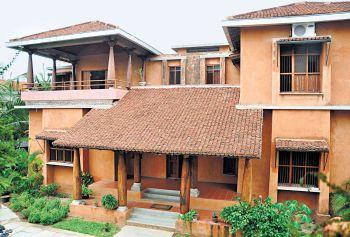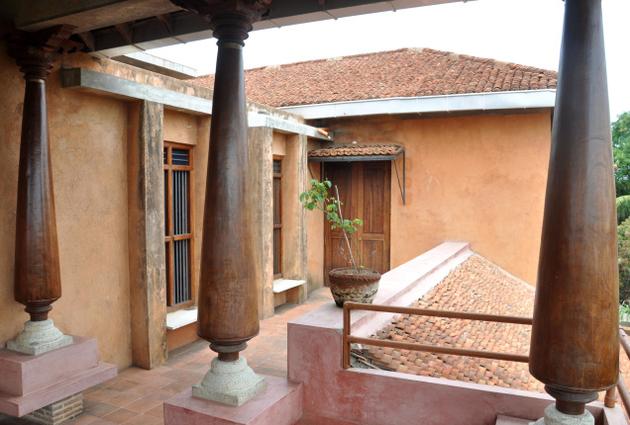
Nestled in a corner of a small lane that branches off from East Coast Road, Ramesh and Priya’s (names changed) house reminds one of ancestral homes in Karaikudi. “Some of our friends ask us if this house is hundred years old,” smiles Priya as she greets me at the door.
There are raised platforms or “thinnais” near the steps leading to the doorway, reminding one of scenes from R. K. Narayan’s novels. Sunlight streams in from the roof down to the central courtyard, which is bounded by thick pillars. “The courtyard is a common feature not only in traditional Indian homes, but also in Italy and France,” says Ramesh, Priya’s husband.
Ramesh and Priya lived in the US for several years before deciding to move back to Chennai. About five years ago, the couple asked an architect based in Pondicherry to create the blueprint. The house was built over three-and-a-half years.
STUMBLING BLOCKS
Finding skilled artisans who would stick to a timeline proved to a big problem. Often times, says Ramesh , the workers would suddenly drop the job on hand and go back to their village for a couple of days. “Staying abroad while the work was going on was a good thing. We weren’t so upset about things not moving on certain days. Had we been here, it would have been more difficult to handle the stress,” he adds.
There were other challenges as well. One of the unique features of the house is the lime plastering that has been used on the interior walls of the house – a building technique that is slowly fading out.
Very few people know this art, and they are extremely secretive about the formula. “When they are mixing the lime, they didn’t want anyone else to work on the house for fear of others finding out. So work had to come to a halt on other areas while this was ongoing,” says Ramesh.
Authentic touches
Windows and wood were salvaged from old houses in Karaikudi. Several trips were made to villages to secure and transport the materials, which ran to a few tonnes in weight. “We got the horse cart that was used to transport the stuff as a bonus!” says Ramesh pointing to the vehicle, which is placed in a corner of their spacious garden. Some block-printed tiles were sourced from Rajasthan.
Traditional aesthetic elements abound in every corner. The pillars in the central courtyard are made of rosewood and polished with linseed oil. Coloured oxide is a unique feature of this home – the side room boasts a large platform, floor and walls made of blue oxide, while one of the front rooms has a large square platform of green oxide, which complements a brown leather sofa.
NO EMBELLISHMENTS
The natural patterns in the oxide enrich the rooms, which otherwise are kept simple and free of embellishment. Little block-printed tiles and patterned niches have been discreetly added to the walls to lend a touch of colour and art.
The kitchen, which was Priya’s pet project, is an open space with a counter that runs along the walls, open shelves, and a ledge for storing mugs and other small cutlery.
An antique almirah with wire netting occupies one corner. Even as the daily cooking is going on, the sounds of pots and pans being used filters out to the rest of the house, lending it a very cosy feeling.
NATURAL HARMONY
The central courtyard is open all the way up to the roof, creating a “chimney effect” for the hot air to rise – hence, temperatures within the house are a couple of degrees lower than the outside. Also, the family relies on ground water for all purposes – even drinking and cooking. “The water goes through so many layers in the ground that it is naturally purified, and fortified with minerals. We actually don’t need RO or artificial purifiers to ‘treat’ the water,” says Ramesh.
As with any eco-conscious home, the garden is an important part of the house. Several plants and trees are being raised in the space outside the home.
And efforts are made to ensure every square foot is put to good use.
For example, Priya points to two beautiful lily ponds in the garden – “Those were formerly pits dug up to mix the lime in. When the work was finished, we converted them into ponds.”
source: http://www.thehindubusinessline.com / Business Line / Home> Industry> Real Estate / by Yamini Vasudevan / August 24th, 2013
